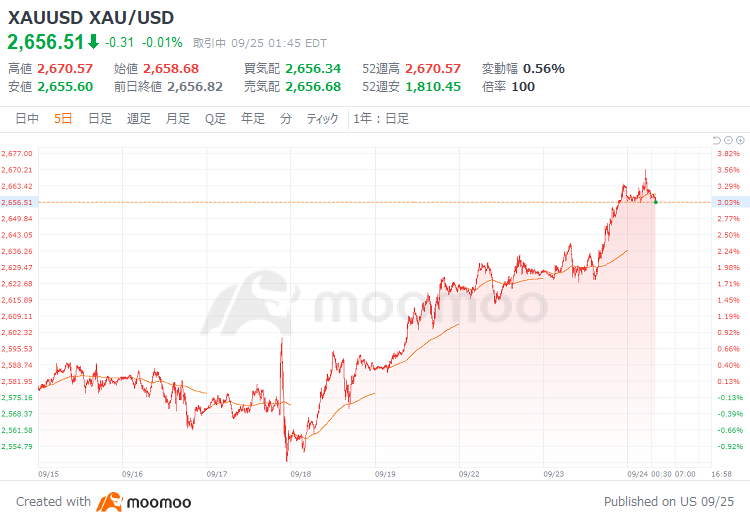NVDA
NVIDIA
-- 109.670 TSLA
Tesla
-- 263.550 PLTR
Palantir
-- 85.850 CRWV
CoreWeave
-- 40.000 GOOG
Alphabet-C
-- 156.060 
Saxo Bank is believed to be deeply concerned about the uncertainty of the US presidential election in November affecting fiscal policy and market stability. "Both parties are unlikely to implement austerity fiscal policies during economic slowdowns, which would increase inflation risks and be positive for gold," the statement said.
Economist Peter Schiff announced this view on X (formerly Twitter) on the 23rd. "Gold has once again hit a record high, but investors are hardly interested. While Bitcoin receives a lot of attention, investors are not only overlooking the rise in gold prices but also failing to recognize its importance. Gold is warning of excessively loose monetary policy and rising inflation."
According to a Reuters report on September 17, Goldman Sachs analyst stated, "We reconfirm our long gold trade recommendation and the price target of $2700 per ounce by early 2025." According to the bank's model, ETF holdings have been gradually increasing for about 6 months after interest rate cuts, which is expected to further support gold prices.


